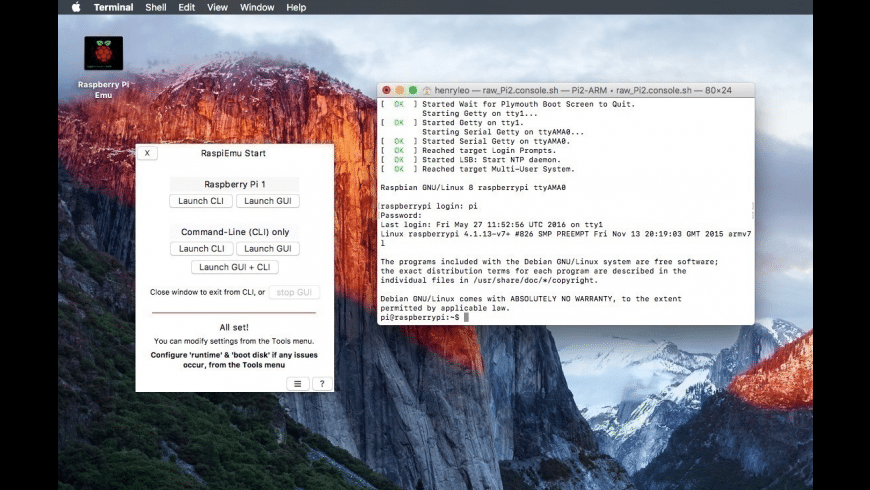
Replace the X with your disk number that you found in the previous step.


File sharing and screen sharing should be accessible as well. You should then be able to go into Finder and find your Raspberry Pi on the network.
#RASPIEMU FOR MAC INSTALL#
If you don’t see an /etc/avahi folder, you may need to install the avahi package separately - recent netatalk packages will install avahi as a dependency, so if you’re doing a new install it shouldn’t be a problem. To register the VNC server as a Bonjour service, create the following file in /etc/avahi/services/rfb.service (you will need to save the file as root, so use sudo before opening your editor).In order for the VNC server to start up at each boot, create the following file in ~/.config/autostart/sktop Įxec=x11vnc -forever -usepw -display :0 -ultrafilexfer.Execute x11vnc -storepasswd to setup the password required for your screen sharing connections.
#RASPIEMU FOR MAC UPDATE#
(You may need to execute sudo apt-get update to update the package list if it complains about missing packages.) In LXTerminal, execute sudo apt-get install netatalk x11vnc to install the necessary packages.On the Raspberry Pi, open up LXTerminal.The default Raspbian desktop screen Setting up file sharing (AFP) and screen sharing (VNC) Reboot the Pi, you should get into the desktop.Expand the root partition to fill the disk.Use the raspi-config tool that starts the first time you boot up to set the following options:.Plug the SD card into the Pi and boot up.(It will take a while… don’t take the SD card out until you get the final prompt and the cogwheel stops spinning in the menu bar) Use it to load the Raspbian image onto the SD card. Use Mac’s Disk Utility to format the SD card into one FAT partition.Download the raw Raspbian image from Raspberry Pi website.Installing the Raspbian image onto the SD card I am not going to be too paranoid about security as I only intend on using my Pi on my home network, but if your Pi is going to be Internet-facing, you may want to read up elsewhere on securing your Pi. I will be assuming that you have basic command line knowledge (running commands, installing packages, editing text files), and some Mac knowledge. This will be useful for quickly transferring files over, and taking control of the Pi remotely.

#RASPIEMU FOR MAC HOW TO#
I’m going to briefly explain how to setup a new Raspberry Pi as a basic desktop computer with file sharing and screen sharing so that Macs can connect to it.


 0 kommentar(er)
0 kommentar(er)
